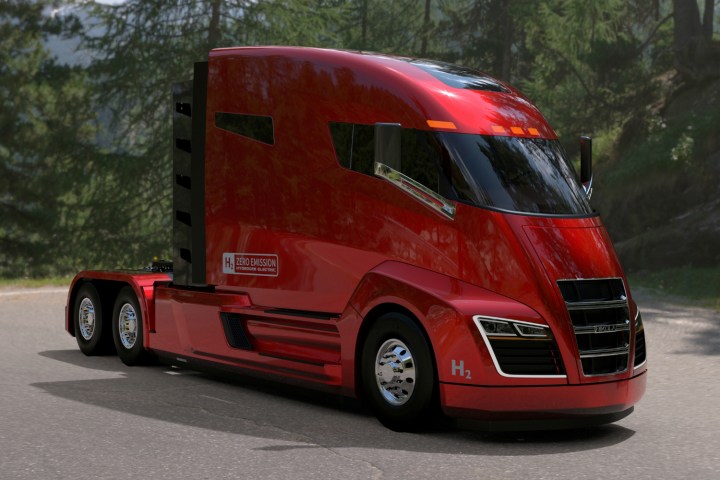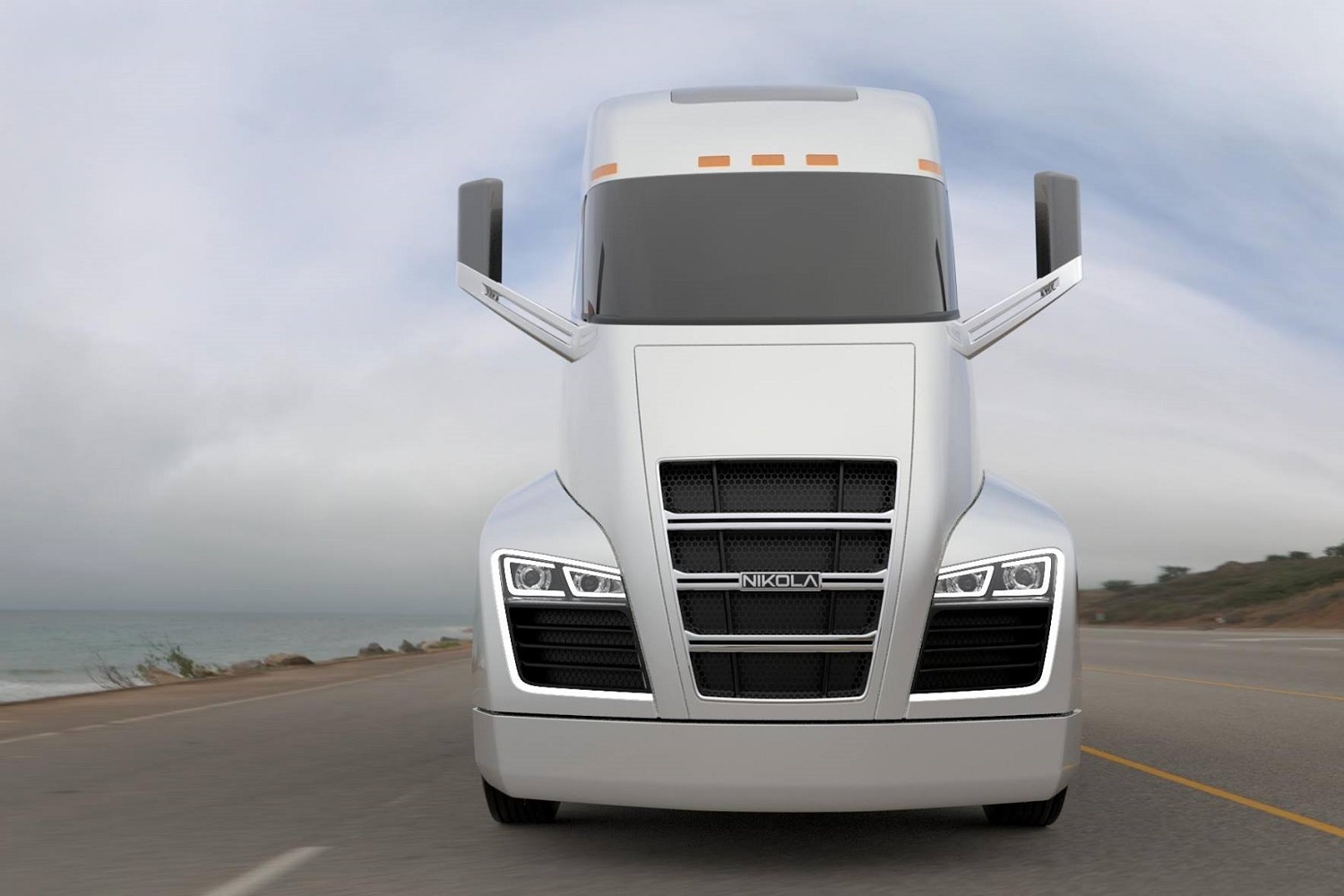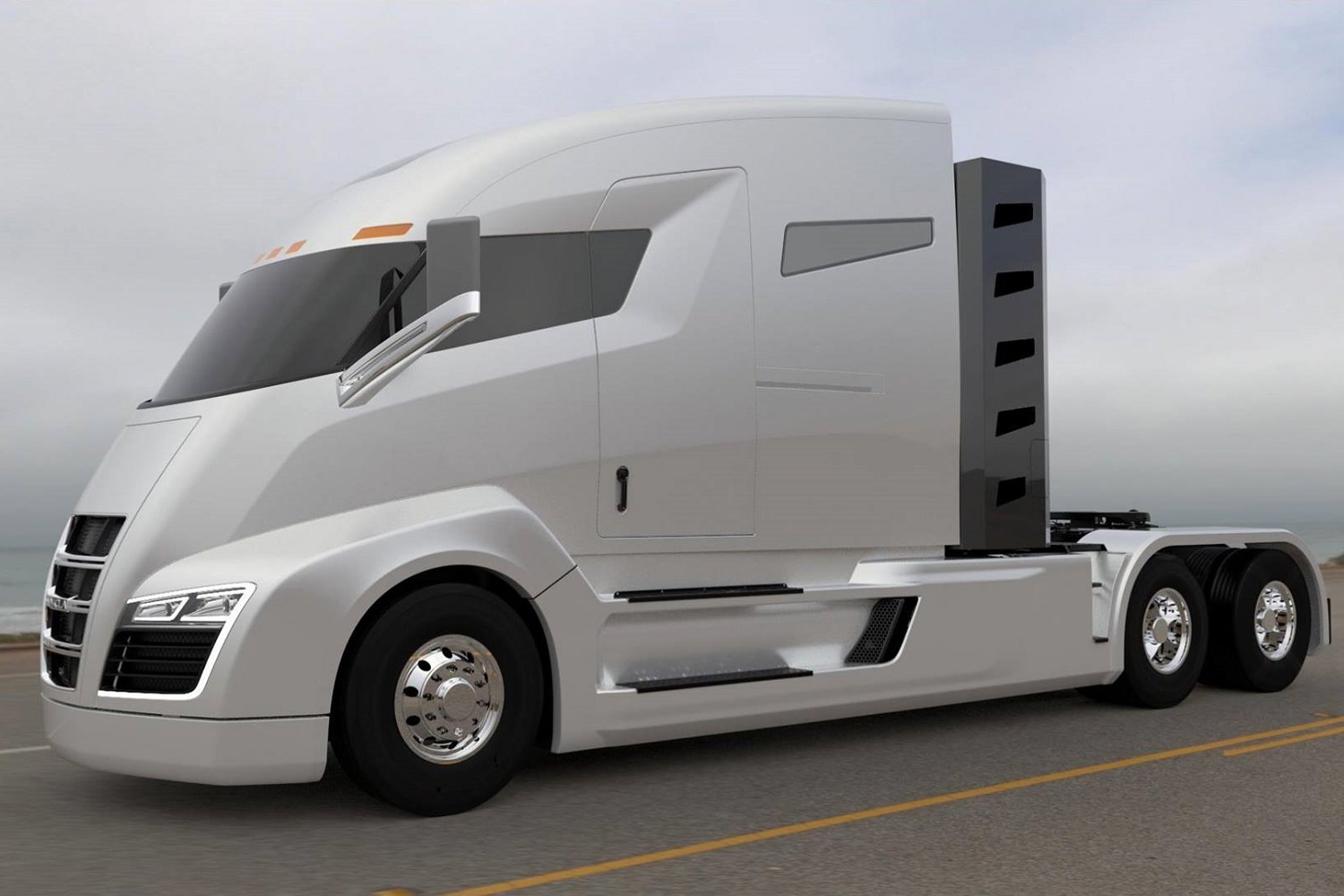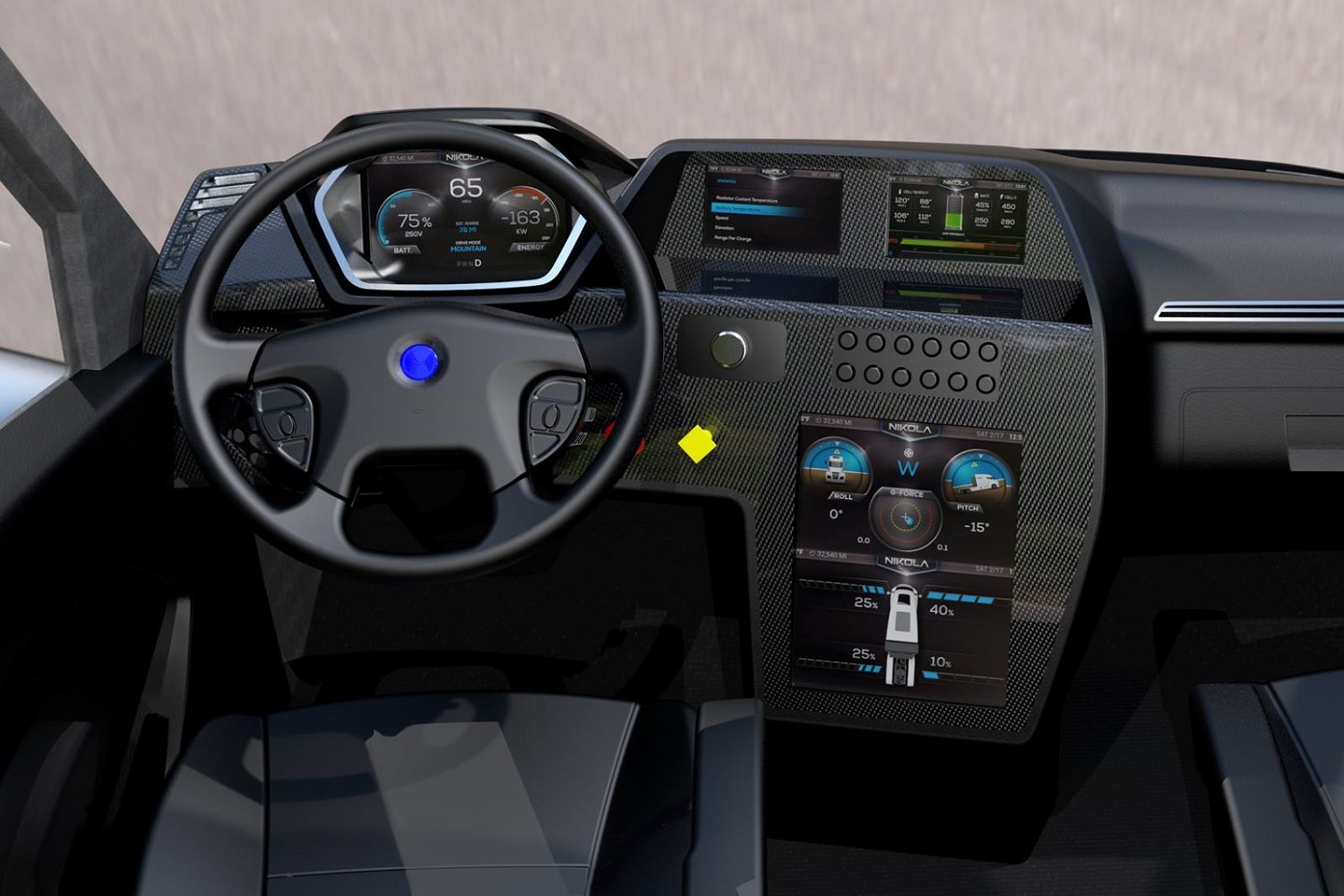
The One emits nothing but water vapor thanks to a hydrogen-electric drivetrain that generates 1,000 horsepower and a stunning 2,000 pound-feet of torque. It can hit 60 mph from a stop in 30 seconds, which makes it about twice as fast as a conventional, diesel-burning semi. It’s also capable of cruising at 65 mph up a hill, meaning it could be the first semi to travel in the fast lane up a mountain pass.
Electricity is generated by a hydrogen fuel cell and stored in a lithium-ion battery pack. The drivetrain provides anywhere between 800 and 1,200 miles of range, and the One returns the equivalent of 15 mpg.
Skeptics are quick to point out that the almost complete lack of an infrastructure makes running a hydrogen-powered semi impractical at best. Nikola is aware of this issue, and it plans to solve it by building a network of hydrogen charging stations across the United States and Canada starting in 2018. Think of it as Tesla’s Supercharger network for hydrogen-powered vehicles.
Like Tesla, Nikola will adopt an unusual business model to distribute its vehicles. It will offer truckers a 72-month/one million-mile lease program that includes unlimited hydrogen, a warranty, and scheduled maintenance for anywhere between $5,000 and $7,000 a month. Sales and maintenance will be handled by Ryder System, which has 800 service centers in North America.
The Nikola One semi will be built in the United States. The company is currently talking to several states, and it will decide on the location of its first factory early next year.
The idea of a semi truck that runs on something other than diesel has generated a surprising amount of interest from the trucking industry. Nikola has already received nearly $3 billion in pre-orders. Production is scheduled to start by 2020, and the One will be quickly followed up by a smaller model appropriately named Two.






